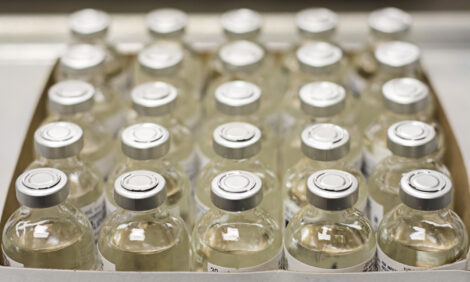



Size, Not Vitamin E Linked to Chicken Fillet Quality Issue
US - White striping of broiler breast meat was more prevalent and severe in heavier fillets, according to new research from the University of Arkansas. Feeding the birds higher levels of vitamin E had no significant effect.Dietary vitamin E level is not associated with the modern condition of white striping in broiler breast meat, report researchers at the University of Arkansas in the current issue of Poultry Science.
White striping could be a potential reason for the rejection of raw breast fillets in the market, according to the report's authors, V.A. Kuttappan and colleagues. The condition is characterised grossly by the white striations occurring on the fillets showing myopathic changes on microscopic examination.
Early research showed similar lesions in the case of nutritional muscular dystrophy, which is a condition caused mainly by the deficiency of vitamin E in the diet. The latest Fayetteville study was intended to evaluate the effect of different levels of dietary vitamin E (dl-α-tocopherol acetate) on the incidence of normal, moderate and severe degrees of white striping, by modern description, on broiler breast fillets.
Basal diets adequate for starter (0 to 18 days), grower (19 to 32 days) and finisher (33 to 49 days) age periods supplemented with 15, 50, 100, 200, and 400IU of vitamin E per kg of feed were used in the study. Each of the five diet treatments were fed to eight pens (53 birds each) of male broilers from a commercial strain.
On day 49, five birds were randomly selected from each pen (n=40 birds per diet treatment) and were processed. Live weight, ready-to-cook weight, weight of the fillets, wings, tenders, legs, and the racks were obtained. The fillets were scored for the three degrees of white striping.
There were no significant differences among the diet treatments with respect to the weight and carcass yield parameters.
Furthermore, the diet treatments did not show any significant effect on the occurrence of normal, moderate and severe degrees of white striping.
However, the researchers commented that fillet weight was the only parameter that had a significant effect on the occurrence of white striping. Higher degrees of white striping were seen associated with heavier fillets, which is in accordance with previous studies.
Different levels of vitamin E levels used in the present study did not show any significant effect on the occurrence of three degrees of white striping, concluded Kuttappan and co-authors. These results suggest that dietary vitamin E level is not associated with the modern condition of white striping in broiler breast meat.
Reference
Kuttappan V.A., S.D. Goodgame, C.D. Bradley, A. Mauromoustakos, B.M. Hargis, P.W. Waldroup and C.M. Owens. 2012. Effect of different levels of dietary vitamin E (dl-α-tocopherol acetate) on the occurrence of various degrees of white striping on broiler breast fillets. Poult. Sci., 91(12):3230-3235. doi: 10.3382/ps.2012-02397
Further ReadingYou can view the full report (fee payable) by clicking here. |








